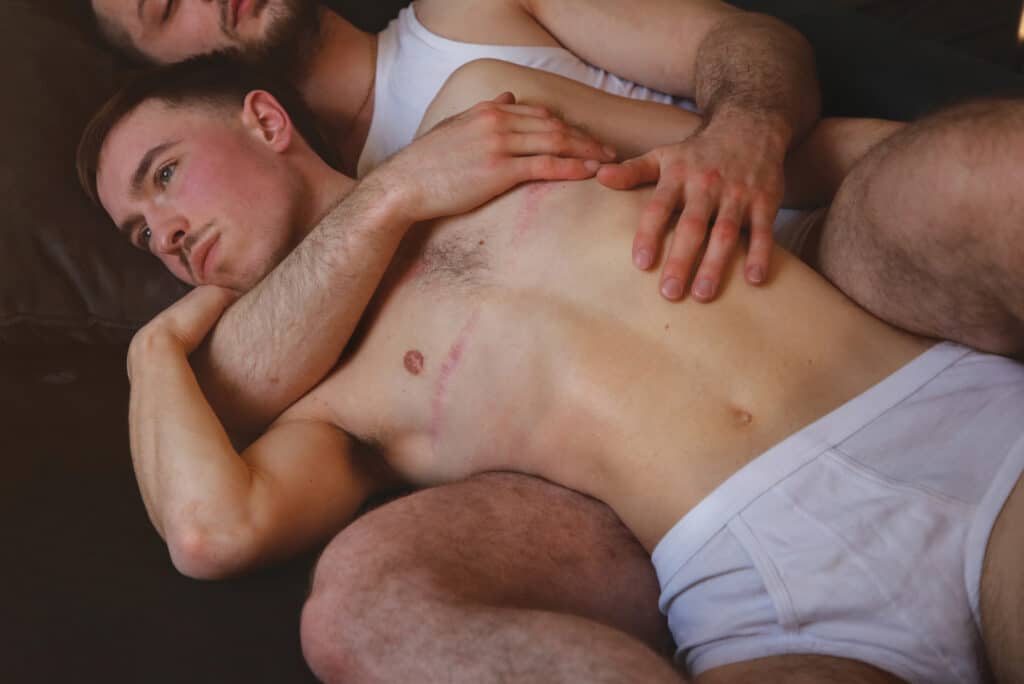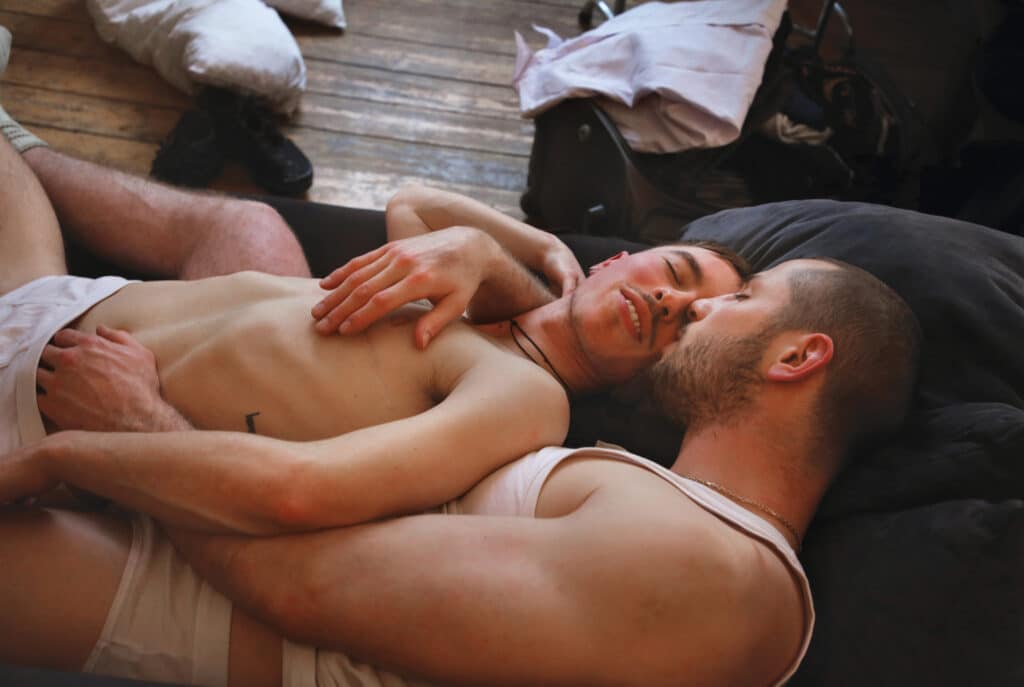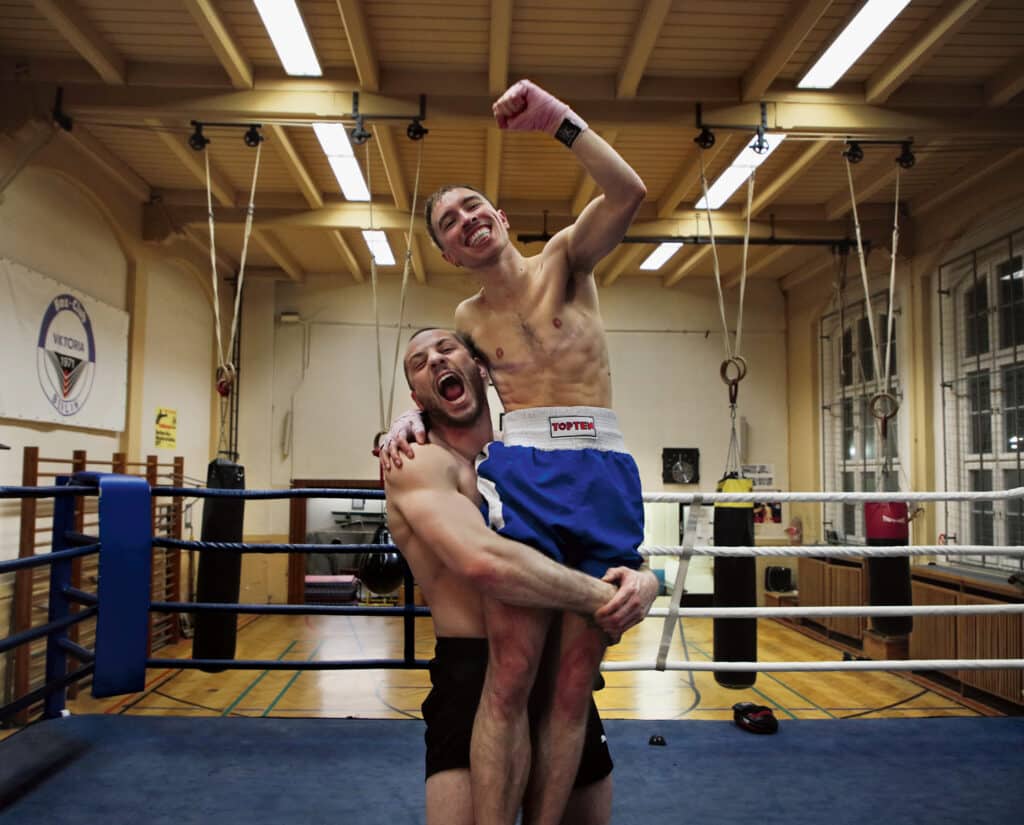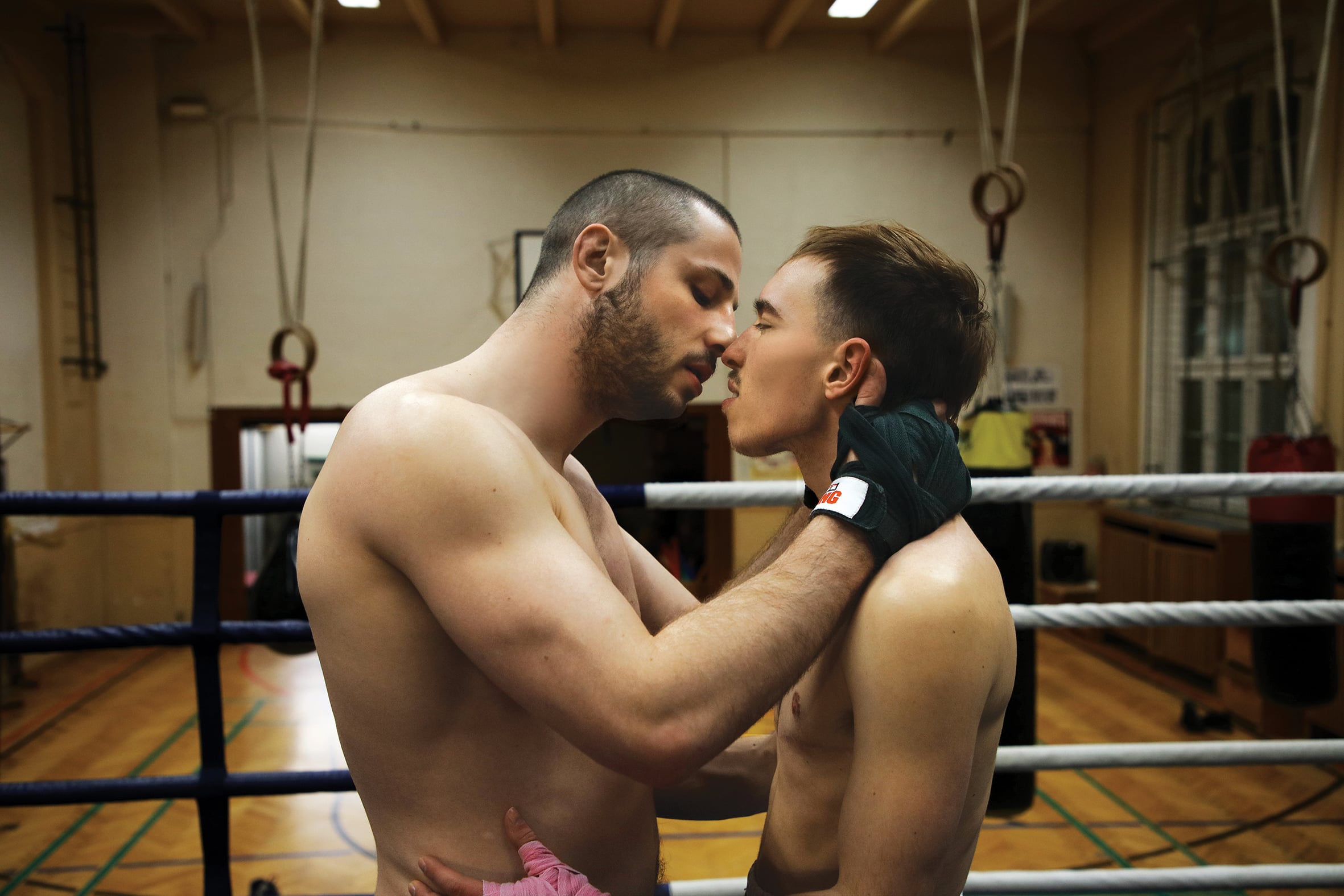Photo: Marc Martin
Marc, this is the first time that you have dedicated an entire photo project to a trans man. What inspired you to go down this path with Jona?
What I liked about Jonah was his way of smiling, despite all the surrounding hatred and the malodorous undertones we are currently experiencing. His zest for life, his sexy-bad-boy attitude are, in my opinion, the most beautiful defence against trans-hostility: Jona feels comfortable in his own skin. How exciting is that! When he plays the macho guy in front of the camera, it's a way of deconstructing classic masculinity. I accompanied Jona for two years - to the boxing gym where he trains and, of course, to the changing room. The latter is one of my favourite places to dispel clichés. I also photographed Jona in his private sphere. This book is not a biography of Jonah, but rather a collection of stages in his life that we staged together. We even chose the kangaroo briefs he wears in some of the pictures together.
Jona, most of the pictures were taken in the boxing gym where you train. When did you discover boxing for yourself? Did this sport and its particular aesthetic shape your own masculinity?
What I really like about martial arts, apart from the physical skills and the self-confidence you gain, is the ritualistic character. Of course, I have my problems with classic queer authorities. Nevertheless, I like the idea of a hierarchy that is ideally completely independent of gender, race or age and the basic agreement that everyone respects each other. Those who have more strength and experience have to orientate themselves towards those who have not been around as long and respect their limits. My first dojo was in Bremen, where I trained as Jona and as him. But my physical transition came much later. I was never questioned in the dojo. It was all about learning together. What martial arts, and boxing in particular, gives me has little to do with gender. I don't experience my masculinity in the ring, but rather my ambition, my affinity for sport and, of course, my quirky idea of a perfect body - but more in terms of strength, speed, muscles, stamina and skills. Counter question: Why do many men have problems being physically close to other men - unless they are half naked, sweaty and slapping each other on the nose? Tenderness, closeness and a certain homoeroticism. That's what boxing is all about, isn't it?

Photo: Marc Martin
Marc, in the book you write that you lose followers on Instagram every time you post a photo of Jonah. How do you feel about that?
On Instagram, the majority of my followers are men who love men. In other words: Men who have a penis. Unfortunately, some of my followers are obviously not ready to accept a pluralistic masculinity. Some comments coming from gay men sound like those of the most radical conservatives. When I started posting pictures of Jonah and got negative reactions, I felt it was a kind of betrayal. An injustice. So the theme of " SO WHAT?!" became both political and erotic. My approach here is the same as that of my other works about masculinity. So in "SO WHAT?!" there is sweat, body hair and testosterone. And Jona is proud of the fact that even the most stubborn of men get their knickers in a twist when they look at his pictures. His post-mastectomy scars are also a symbol of his journey as a man.
Jona, masculinity has never been criticised and deconstructed as much as it is today. As a photographer, Marc continues to deal with masculinity. Did you feel it was important or necessary to allow Marc to engage with your masculinity, and therefore with trans masculinity?
Jonah : I think it is very important that the deconstruction of masculinity is not only reserved for cis men. Just as feminism aims to liberate all genders, the idea of a new, freer masculinity must be open to all people. Maybe it starts with professional footballers who wear nail varnish. But what about trans men who are denied their trans status in psychological assessments because they like to wear make-up and don't conform to a rigid binary cis masculinity? I think Marc's work is wonderful and I see it as being in a constant state of change or process, growing through the new perspectives that the models bring with them. It seemed to me that trans masculinity was a blind spot for him. What happens when masculinity is not deconstructed but constructed from the ground up? When the certainty of being a man is not based on physicality and at the same time tries not to fall into the role cliché trap? I wanted to explore this perspective and make the results visible.
Marc : I don't believe that being masculine and muscular is necessarily toxic. And I don't think it's unhealthy to be attracted to masculine attributes. For me, it's problematic when being "masculine" makes you feel superior to others. Even within the community: that's the problem. That's what I want to fight with my work at all costs.

Photo: Marc Martin
How was the exhibition perceived in Berlin, in the Eisenherz bookshop?
Jonah : We've never had so many reactions to an exhibition at Eisenherz, as my colleagues have confirmed. We got people talking and encouraged them to ask questions, which made me very happy. In general, the feedback ranged from "thank you so much for your openness and for taking people by the hand and inviting them in" to "it's so great to see yourself represented and to be shown a possible perspective on trans (masculine) life, it's encouraging!" Eisenherz always has a monthly bestseller list and in November our book was at the top with over 65 copies sold. That's a great feeling and also serves as a sign: trans men have a place alongside cis gay men, are in demand and are valued.
Marc, what do you want with the book?
" SO WHAT?!" is intended to be uncomfortable, both through its poetic and its frontal, sexual aspect. I want this mixture of text and photography to make people think and reflect on their own fears and prejudices. And that the book brings trans and cis people together so that we can stand up together against intolerance and stupidity. I worked a lot with Mathis Chevalier, a former MMA champion, a sport that is not known for being squeamish about openness. I photographed Mathis and Jona together because of their shared passion for martial arts. When Mathis carries Jona in the ring, it's like a victory that they both flaunt. Their sexually charged attitude blows up the picture. As a photographer, I am still convinced that beautiful pictures can also change people's minds.
" SO WHAT ?! "Marc Martin & Jona James, Agua, 68 pages, 35 euros
The book is available in the Berlin bookshop Eisenherzand on the website of the Agua publishing house available.
Transparency note: Annabelle Georgen wrote the foreword to the book

Photo: Marc Martin

